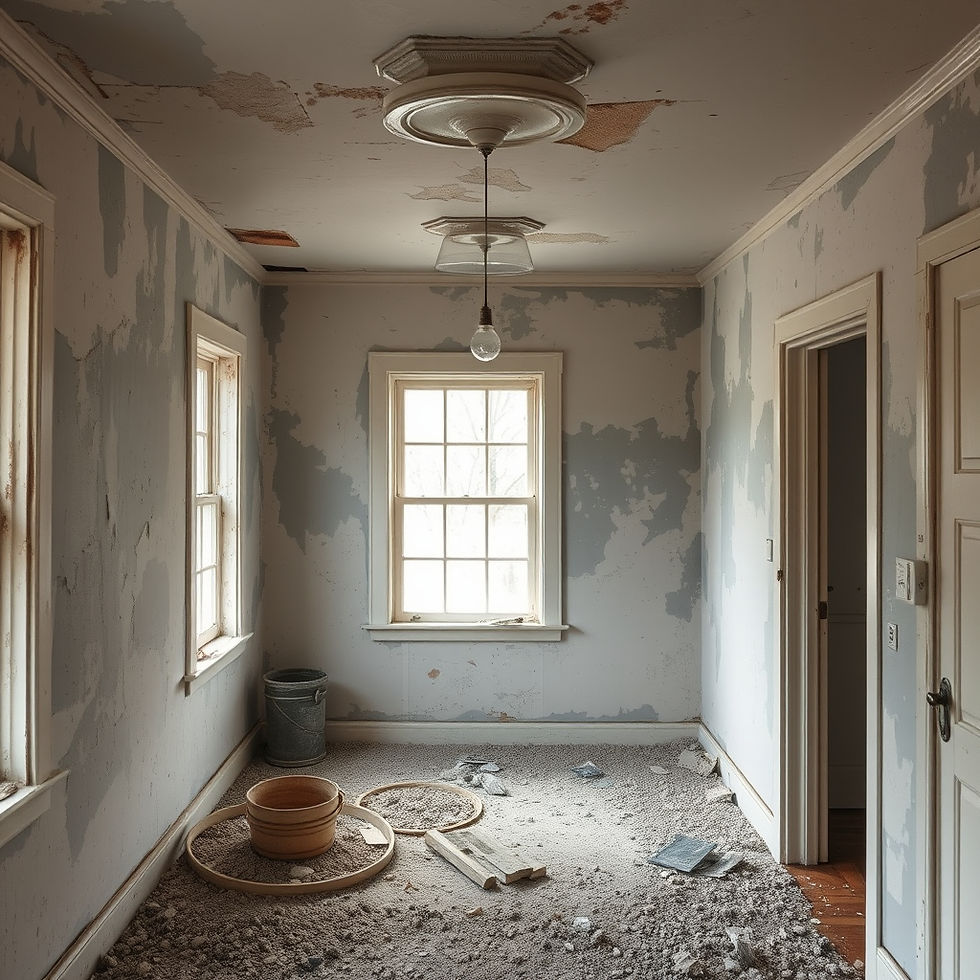What Happens After a Disaster? Understanding the 4-Step Property Recovery Process
- Nick Gordon
- Jun 27
- 2 min read

When disaster strikes, whether it’s a flood, fire, storm, or mold outbreak, your property can go from safe to severely damaged in an instant. It’s a stressful time and it can be hard to know what to do next or who to call.
At Advanced Restoration, we believe that knowledge is power. That’s why we’re breaking down the four critical stages of disaster recovery: Repair, Mitigation, Remediation, and Restoration. Each plays a unique role in returning your home or business to its pre-loss condition.
1. Repair: Fixing the Immediate Problem
The first step is to address what caused the disaster.
Before we can move forward with cleanup or rebuilding, we need to repair the source of the problem. Whether it’s a broken pipe, a roof leak, or faulty wiring.
Examples of repair:
Fixing a burst pipe
Patching a roof damaged by a storm
Replacing a malfunctioning appliance that caused water damage
Fixing a broken window
Why it matters: If the original problem isn’t fixed, the damage could repeat or worsen. This step ensures the issue won’t continue while the property is being restored.
2. Mitigation: Preventing Further Damage
Mitigation comes next. It’s all about damage control.
This phase focuses on stopping the spread of damage and stabilizing the property. It’s a time-sensitive step that requires fast action.
Examples of mitigation:
Water extraction and drying
Tarping roofs or boarding up windows
Removing debris
Setting up containment barriers
Why it matters: Mitigation limits the overall cost of the loss and prevents secondary issues like mold growth or structural weakening.
3. Remediation: Removing Hazards
After the site is stabilized, we begin cleaning and decontaminating.
Remediation focuses on removing any hazardous materials or contaminants that may pose a risk to your health or safety.
Examples of remediation:
Mold removal and treatment
Disinfecting after sewage or biohazard exposure
Fire and smoke damage cleanup
Air purification after smoke or chemical exposure
Why it matters: Even if everything looks dry and clean, hidden contaminants can linger. Remediation ensures your home or business is safe to inhabit.
4. Restoration: Rebuilding and Returning to Normal
This is where the transformation happens.
Restoration is the final step where we rebuild, repair and restore your property to its original (or better) condition. This phase often includes construction and cosmetic finishing work.
Examples of restoration:
Replacing drywall, flooring, or cabinetry
Painting and refinishing
Rebuilding damaged structures
Final cleaning and inspections
Why it matters:
This step brings everything together, making your space look, feel and function like home again.
The Complete Disaster Recovery Process at a Glance:
Why Choose Advanced Restoration?
We handle every step of the process from the first emergency call to the final coat of paint. Our team is certified, experienced and committed to helping you recover as quickly and safely as possible.
Emergency? Call us 24/7 at (631) 422-2100
Schedule your free inspection at www.advancedrestoration.com








Comments